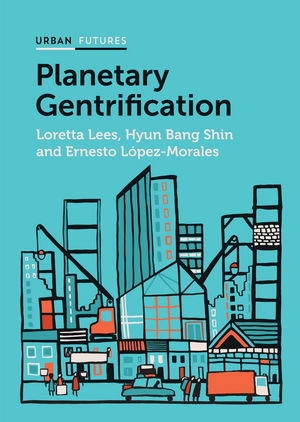Doing Comparative Urbanism Differently
Özgür Sayın, Michael Hoyler, and John Harrison
Abstract
Moving beyond siloification in urban studies
The first two decades of this century have been characterised by the emergence of a global urban studies. Despite the development of a critical body of work that has contributed to the globalisation of urban thinking, this has been accompanied by a diversification in approaches to understanding cities and the urban condition. In this paper, we focus on four of the most influential and long-standing theoretical perspectives underpinning global urban studies, namely global cities, state-rescaling, developmental and postcolonial.1 Each of these approaches has originated from very different intellectual starting points and subsequently developed its own conceptual vocabulary, methodological tools and empirical preoccupations. Despite each approach representing a diverse set of ideas, sometimes overlapping with other approaches, the result has been a siloification around different schools of thought, often constructed and collapsed (by others) into a simplified core idea and perspective. There is a growing recognition that the constant attacking and defending of what constitutes a legitimate approach to current urban theory making has led to an intellectual environment in which it is difficult to engage in meaningful exchange (Brenner, 2018; Hoyler and Harrison, 2017; van Meeteren et al., 2016).
These cities that do not easily fit, and therefore fall between the gaps of international urban theory making, are increasingly the subject of researchers’ attention.2 A first grouping of cities, such as Doha, Panama, Manila and Beirut, have capitalised on their in-betweenness to develop niche economies (Kleibert, 2017; Krijnen et al., 2017; Sigler, 2013). What we might usefully identify as interstitial cities leads us to consider a second grouping, including Moscow, Budapest and Istanbul. These former imperial interstitial cities sit at the interface of what Müller (2020) has termed ‘Global East’–‘suspended somewhere in the shadows between the Global North and the Global South, not quite belonging to either’ (Müller, 2020: 734). This is true in particular for Istanbul, which ‘[l]ike its geographical location, […] resembles both West and East [and] has been characterised generally by the less-developed attributes of the Global South but also has certain modern, developed aspects of the Global North’ (Yetiskul and Demirel, 2018: 3338).
Using Istanbul as an illustrative case, this paper proposes an alternative approach to doing comparative urban research that brings different theoretical perspectives into conversation. Recent convention has it that there are two principal approaches to comparative urbanism: ‘The first is a multi-city comparison, while the second deals with multiple sites within a single city’ (Ren and Luger, 2015: 153). We argue that collapsing comparative urbanism into debates about site selection is counterproductive to the type of meaningful exchange required to understanding the multiple ways of seeing cities (section ‘Doing comparative urbanism differently’). Our approach is grounded in a belief that to engage in meaningful comparative urban research we must explore the extent to which different perspectives (can) come together as complementary alternatives in explaining processes of urban change. We do this in two ways. We begin by stress-testing the capacity and limits of global cities, state-rescaling, developmental and postcolonial perspectives in making sense of cities, and in our case, Istanbul (section ‘Explaining Istanbul: Stress-testing urban theories in an interstitial city’). Arguing that Istanbul can only be partially understood through adopting a single epistemological perspective, we proceed in section ‘Conjunctural cities as both city type and approach’ to examine whether interstitial cities require a new theoretical starting point, or are best served by bringing together existing perspectives as complementary alternatives? From this we argue that there is a strong case to extend a conjunctural approach to urban theory making by proposing ‘conjunctural cities’ as both a distinctive type of city and as an approach to analysing cities. Attaching particular importance to the latter proposition, we demonstrate how a conjunctural approach is capable of establishing the potentials and limits of individual perspectives, ascertaining which different perspectives may usefully come together to go beyond these limits, and thereby establishing an urgently required open analytical framework. We conclude that conjunctural cities as an approach to analysing cities is a necessary step in moving beyond siloification in urban studies and toward putting engaged pluralism into practice.

 With the same three authors, Planetary Gentrification may be seen as a companion to the 2015 volume,
With the same three authors, Planetary Gentrification may be seen as a companion to the 2015 volume,